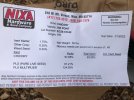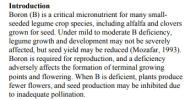They are expensive, but I have done pretty well with whitetail clover. I usually mix it in with the TSC forage clover mentioned previously. Or have done it with the local agway seed bin ladino, AG dutch white, and their AG medium red. They buy alot of seedway products. I think they have a good improved variety in the whitetail blend. It seems to last years, and produces seed well, even with frequent mowing. Every 2 or 3 weeks to 4-5 inches. A few years back I spread it in my lawn, weekly 3 inch mowings and it's still in there....
I've been lazy about adding borax to my clover plantings. But, I used to take a stick and break up the clumps in 2lbs/acre of borax soap, then split it up, some for each bag of lime or fertilizer I'd use. Some of my best stands of clover have been when I added boron to the soil. Turnips love it too. You can add it to your gly sprayings too.



